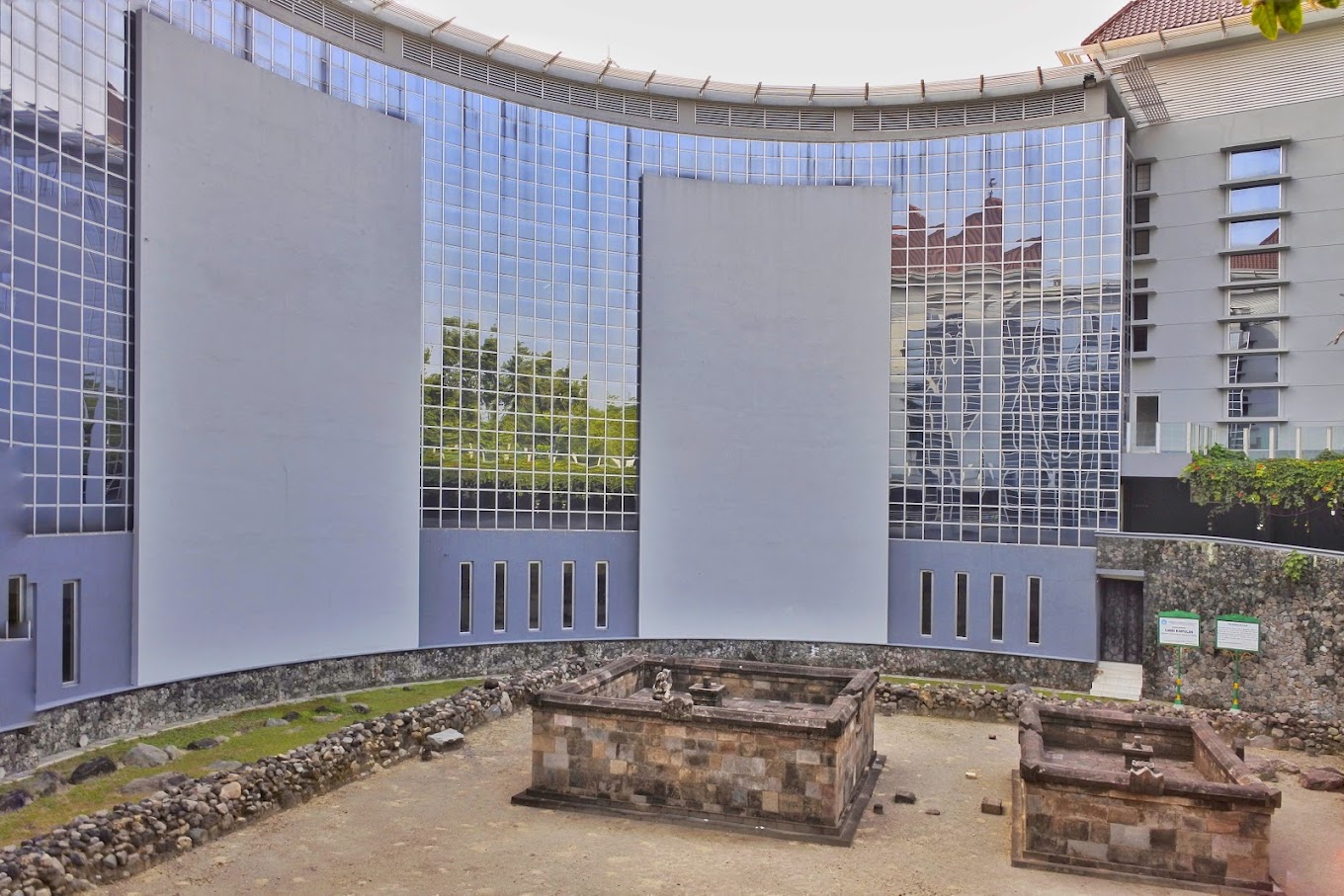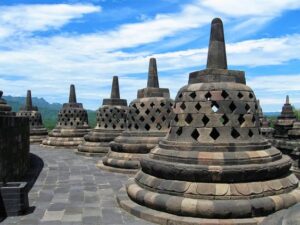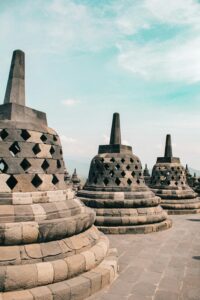Yogyakarta, a city rich in cultural heritage, is a place where history speaks through ancient, majestic buildings. One of the historical relics that holds rich stories from the past is Kimpulan Temple. Hidden behind the natural beauty and hustle and bustle of the city of Yogyakarta, this temple offers a spiritual journey and stunning Hindu architectural wonders. Have you ever heard about the history of the Kimpulan temple? Come on, check out the following review to find out!
Get to know Kimpulan Temple
Kimpulan Temple is a Hindu heritage located in Kimpulan Hamlet, Kimpulan Village, Prambanan District, Sleman Regency, Yogyakarta. This temple is part of a temple complex spread around Prambanan Temple and Plaosan Temple. Although not yet fully understood, this temple is believed to date from the 9th to 10th century AD, along with the splendor of the Ancient Mataram Kingdom.
Kimpulan Temple, a relatively new discovery in the context of ancient Indonesian temples, has an interesting history. Discovered in December 2009 during a trail of the Islamic University of Indonesia’s new library, it was originally called Candi UII due to its location on the campus. However, later the name was changed to Kimpulan Temple, taking the name from the hamlet where the discovery was made, Kimpulan Hamlet.
Based on Hindu artifacts found in the temple, such as Lingga-Yoni, Ganesha statues, and Nandi statues, it is estimated that this temple was built in the 9th century and has Hindu religious tendencies. Although information about the original structure is still limited, the legs and stairs with carvings of Kala (a fierce guardian deity) are some of the surviving parts. Experts believe that the temple’s upper structure, which may have been made of organic materials such as bamboo or wood, could not survive for long.
Although modest in size and architecture, Kimpulan Temple is a registered cultural heritage site by the Sleman Regency government, demanding protection and preservation. It is anticipated that further research will reveal more details about the history and meaning of this temple in the future.
The Story of the Hidden Conclusion
Kimpulan Temple is not only a magnificent stone structure, but also a historical keeper that holds many mysteries. Even though there is still much that has not been revealed about its history and original function, archaeologists and historians continue to dig up information to uncover the secrets hidden within the temple’s stones.
According to local legend, Kimpulan Temple is believed to be the hermitage of sages in the past. Surrounded by forest greenery and a tranquil atmosphere, this temple was a perfect place of meditation and contemplation for Hindus in ancient times.
Unique Architecture and Ornaments
Kimpulan Temple stands out with its impressive typical Hindu architecture. The magnificent temple structure is made of andesite stone carved with extraordinary detail. Its architectural characteristics include reliefs that tell Hindu epic stories, such as the Ramayana and Mahabharata, as well as carvings depicting Hindu gods and goddesses.
One of the striking ornaments is Kalamakara, a giant ornament that symbolizes strength and protection. This kalamakara can be seen at the gate, above the statue niche, and in the corners of the temple, giving a spiritual touch and magical power to the temple environment. Uncovering the Mystery of Kimpulan Temple
Even though it has been the object of intensive research, there are still many mysteries surrounding Kimpulan Temple. Researchers continue to explore this site to understand more deeply its true function and meaning. It is hoped that these efforts will open the dark veil of the past and bring new knowledge about Hindu civilization to Java.
Conclusion in Yogyakarta Multicultural Civilization
The existence of Kimpulan Temple is proof of the cultural diversity and spirituality that is deeply rooted in Yogyakarta. Even though it is in the midst of a strong Islamic environment, this temple remains a silent witness to the glorious past and rich heritage of Hinduism.
Exploring Kimpulan Temple
For travelers and history lovers, Kimpulan Temple is an interesting destination to explore. Located around the Prambanan Temple complex, this temple is easily accessible from Yogyakarta city center. Visitors can enjoy the beauty of ancient architecture, contemplate amidst green nature, and find rare spiritual peace amidst the hustle and bustle of modern life.
Visit Kimpulan Temple
- Location: Kimpulan Hamlet, Kimpulan Village, Prambanan District, Sleman Regency, Yogyakarta.
- Opening Hours: Kimpulan Temple can be visited every day from 08.00 to 17.00 WIB.
- Entrance Ticket: Kimpulan Temple entrance ticket is available for Rp. 10,000,- per person.
Explore the beauty and wisdom of the past at Kimpulan Temple, where ancient stones speak of spiritual journeys and eternal inter-religious harmony.
Temple tourism around Kimpulan Temple
The area around Kimpulan Temple offers a number of interesting tourist destinations that can be visited by tourists who are interested in natural beauty and cultural history. Here are some temple tourist attractions around Kimpulan Temple:
- Prambanan Temple: Located about 10 kilometers from Kimpulan Temple, Prambanan Temple is the largest Hindu temple complex in Indonesia and is a UNESCO World Heritage Site. This temple is famous for its magnificent architecture and reliefs depicting the epic stories of the Ramayana.
- Plaosan Temple: Located about 12 kilometers from Kimpulan Temple, Plaosan Temple is a Buddhist and Hindu temple complex that has unique architecture. Consisting of two complexes, namely Plaosan Lor and Plaosan Kidul, this temple offers a charming panorama and a strong spiritual feel.
- Kalasan Temple: Kalasan Temple is about 15 kilometers from Kimpulan Temple. This temple is a Buddhist temple that has a rich history and beautiful architecture. Around the temple, tourists can find street vendors selling various souvenirs and typical Yogyakarta food.
- Sari Temple: Located about 15 kilometers from Kimpulan Temple, Sari Temple is one of the Hindu temples that still stands strong in Yogyakarta. Even though only the basic building remains, Sari Temple is still interesting to visit because of its architectural beauty and high historical value.
- Ratu Boko Temple Tourist Park: Ratu Boko Temple Tourist Park is about 20 kilometers from Kimpulan Temple. Apart from offering spectacular views from the top of the hill, this tourist park also offers historical remains in the form of a temple complex, fort and tombs dating back to the 8th century.
By exploring temple tourism around Kimpulan Temple, tourists will be able to enjoy the wonders of ancient architecture, feel the spiritual nuances, and understand more deeply about the rich history and culture of the Yogyakarta region. Are you interested in touring Kimpulan Temple and its surroundings? Use the Jomblang Cave Tour service to get comfort while traveling in Yogyakarta. Come on, contact us now!





